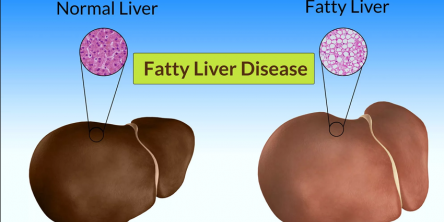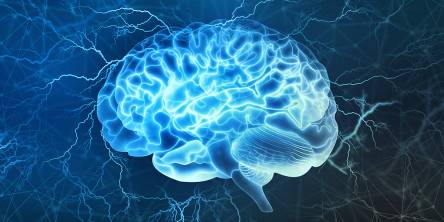14 Signs of Migraine Prodrome

Prodrome is the first phase of a migraine and can signal that a headache is about to start. To treat chronic headaches, you need to know everything about your headache type.
There are 14 possible symptoms of migraine prodrome, the first of four phases of a migraine attack, which might be helpful if recognized as a warning sign of an impending migraine.
1. Aphasia - difficulty with words
Aphasia, or the loss or impairment of the ability to use or comprehend words, is a typical migraine symptom that can start during the migraine prodrome. Reading and speaking become difficult as a result.
2. Depression
Even migraineurs without a history of mood disorders can experience depression during the migraine prodrome. This is because the migrainous process in the brain affects the amounts of neurotransmitters like serotonin and norepinephrine.
3. Irritability
Irritability is, unfortunately, one of the initial signs of migraine prodrome. As if migraines weren't bad enough, this complicates things even more for migraineurs and those who care about them. Migraine sufferers frequently feel guilty as a result of their anger.
4. Concentration issues
Concentration problems can be a sign of the migraine prodrome and can be a major roadblock for migraine sufferers. This sensation is not only irritating, but it can also be dangerous when migraineurs are driving or operating machinery or equipment.
5. Fatigue
Fatigue is one of the symptoms of migraine prodrome. This exhaustion is not the same as being tired. This lethargy manifests itself as a feeling of weariness and exhaustion to the point that the migraineur may feel unable to respond to anything.
6. Increased urination, diarrhea
Migraine prodrome symptoms can include excessive urination and diarrhea, making it difficult for migraineurs to leave the house during this time.
7. Phonophobia
Increased sensitivity to sound, often known as phonophobia, is a typical migraine prodrome symptom that can last during the aura and headache phases. Phonophobia drives migraineurs to avoid sound by seeking out calm places, wearing earplugs and covering their heads with pillows.
8. Photophobia
One of the most common migraine symptoms is photophobia or heightened sensitivity to light. It can start during the migraine prodrome and last until the migraine attack is over. Even between migraines, many migraineurs are photophobic, and light can exacerbate migraine symptoms.
9. Increased thirst
As a symptom of the Migraine prodrome, increased thirst might occur. This is one of the most commonly overlooked prodrome symptoms, particularly by people who have other medical conditions that cause increased thirst or who take medications that cause increased thirst.
10. Repetitive yawning
Repetitive yawning is another Migraine prodrome symptom that is often neglected. Is there a link between dopamine levels and this? Better awareness of these symptoms may lead to a better understanding of Migraine disease as a whole.
11. Sleep issues
Sleep issues can be both a sign of migraine prodrome and a migraine trigger, which is intriguing. It's no surprise that migraines may be perplexing. This is a true contradiction.
12. Stiff neck
Migraine prodrome can cause a stiff neck. If the stiff neck persists without a reason other than Migraine, you should see a doctor because it could be a sign of other health problems, some of which require treatment.
13. Nausea
Nausea is a well-known Migraine symptom, however, many people are unaware that it can start during the prodrome phase, up to two days before any head pain or other symptoms appear.
14. Food cravings
Cravings for food might be a sign of Migraine prodrome. Cravings can be for any type of food, including sweet, salty, carbohydrate, protein, or any combination of these. So yet, there's no proof that they're linked to any deficiencies in the body.
Similar Articles
We often experience small discomforts or symptoms that seem insignificant, like headaches, fatigue, or brittle nails. Many times, we brush them off, thinking they’ll go away on their own. However, these minor issues might be your body’s way of telling you that something more serious is going on.
According to the World Health Organization (WHO), half to three-quarters of adult persons globally experienced a headache in the past year. Unfortunately, tension headaches are one of the most prevalent symptoms you can have. Furthermore, some tension headaches resemble migraine headaches, making matters worse.
The review of Yakrit Plihantak Churna is going to be amazing. You will know the facts, does it works along its benefits. The liver is the main engine of the body. It is the second largest gland in the body.
A podiatrist is a doctor who focuses on treating foot and ankle ailments. If you have specific medical issues, you may need to see a podiatrist for therapy that your primary doctor cannot offer. Don't overlook pain in your lower leg, foot, ankle, or toes.
A podiatrist is a medical expert who focuses on foot and ankle care. There are various reasons you may need to see one.
Swelling is a common issue that can strike anyone. Occasional leg swelling may occur after a long day on your feet or from sitting too long. However, if your legs are regularly swollen, it could indicate a serious underlying condition. Swelling can cause leg pain, loss of sensation, redness, and itching. If left unmanaged, it can lead to stiffness and difficulty walking.
Choosing the best aesthetic medicine courses will significantly boost your career. Medical professionals looking to expand their practice and stay ahead in the field of aesthetic medicine will find these training programs invaluable
Lower back pain is like a storm gathering over the horizon all day. The dull discomfort, the throbbing feeling, and the stiffness all add up until, like a thunderclap, it explodes into full-fledged pain. It penetrates your whole body, removing choice and control. Your mobility is restricted, making daily tasks difficult, and if not addressed, it can cause permanent damage.
Even though migraine affects over one billion people around the world, it has long been neglected as one of the most devastating diseases on the planet. Migraine headaches are a neurological disorder characterized by recurrent pounding or throbbing headaches, nausea and vomiting, and sensitivity to light, sound, and strong odors









